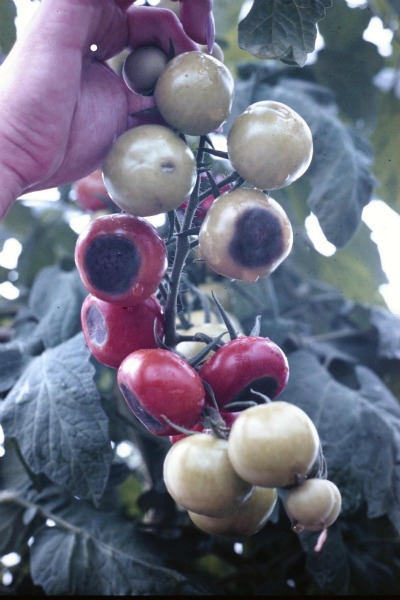
Dec. 9, 2011, Zurich, Switzerland — Blossom end rot on tomatoes and
cucumbers, and spotty apples – these unpleasant blemishes on fruits and
vegetables not only compromise the flavour, but also cause significant
harvest losses every year.
Dec. 9, 2011, Zurich, Switzerland — Blossom end rot on tomatoes and cucumbers, and spotty apples – these unpleasant blemishes on fruits and vegetables not only compromise the flavour, but also cause significant harvest losses every year.
The characteristic blotches and spotting can be traced back to insufficient calcium uptake or faulty calcium transport within the plant. Consequently, the damage can occur even if the soil provides sufficient calcium.
A team under the leadership of scientists from the University of Zurich and Pohang University of Science and Technology, Korea, has for the first time identified a protein that is responsible for the calcium transport from the root to the shoot.
“Without this transport protein, plants exhibit stunted growth,” explains Enrico Martinoia, professor for molecular plant physiology at the University of Zurich.
CALCIUM UPTAKE THROUGH THE ROOT EPIDERMIS
Calcium provides stable cell walls for plants and transmits signals within the cells. Calcium concentration varies within the plant depending on area, which requires complex regulation and transport mechanisms.
How and from which tissue calcium ions are taken up by the roots and transported to the shoot of the plant was largely unknown before. In order to settle these questions, the scientists examined the cultivated plant Brassica Juncea, commonly known as brown or Indian mustard, and the model plant Arabidopsis thaliana, or thale cress.
The researchers identified a specific transport protein that advances calcium ions from the root into the shoot.
In their article recently published in the Proceedings of the National Academy of Sciences, they also show that the calcium uptake occurs via the root epidermis and not through the endoderm as earlier presumed. The identification of the transport protein for calcium is a first step in eliminating the formidable deficiency symptoms in food plants.
 |
| Blossom end rot on tomatoes (Agroscope). |
Print this page